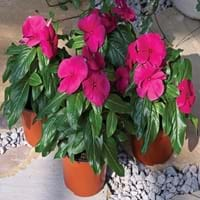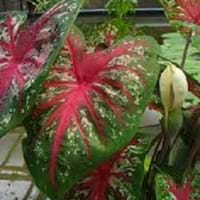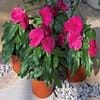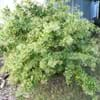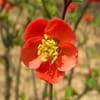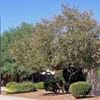Life Span
Annual
Annual and Perennial
Type
Tender Perennial
Tender Perennial
Origin
Hybrid origin, Madagascar
Southern Europe, Mediterranean
Types
not available
Not Available
Habitat
subtropical regions, Tropical areas
gardens, Grassland, Prairies, tropical environments, Tropical regions
USDA Hardiness Zone
9-15
7-9
Sunset Zone
A1, A2, A3, H1, H2, 1a, 1b, 2a, 2b, 3a, 3b, 4, 5, 6, 7, 8, 9, 10, 11, 12, 13, 14, 15, 16, 17, 18, 19, 20, 21, 22, 23, 24
4, 5, 6, 14, 15, 16, 17, 18, 19, 20, 21, 22, 23, 24
Habit
Oval or Rounded
Mat-forming
Flower Color
Red, Pink, Peach
White, Green
Flower Color Modifier
Bicolor
Bicolor
Fruit Color
Not Available
Green
Leaf Color in Spring
Dark Green
Gray Green
Leaf Color in Summer
Dark Green
Gray Green
Leaf Color in Fall
Dark Green
Gray Green
Leaf Color in Winter
Dark Green
Light Green
Leaf Shape
Elliptic and Ovate
Linear
Plant Season
Spring, Summer, Fall, Winter
Spring, Summer, Fall, Winter
Sunlight
Full Sun, Partial Sun
Full Sun, Partial Sun
Type of Soil
Clay, Loam, Sand
Loam, Sand
The pH of Soil
Neutral, Alkaline
Neutral, Alkaline
Soil Drainage
Well drained
Well drained
Bloom Time
Indeterminate
Spring, Late Spring, Early Summer, Summer, Late Summer, Early Fall
Tolerances
Pollution, Drought, Salt
Drought
Where to Plant?
Ground, Pot
Container, Ground, Pot
How to Plant?
Cuttings, Seedlings
Seedlings, Stem Cutting
Plant Maintenance
Medium
Medium
Watering Requirements
Do not water excessively, Needs less watering, Needs small amount of water
Allow soil to be completely dry in between waterings, Water Deeply, Water less during winter
In Summer
Lots of watering
Lots of watering
In Spring
Moderate
Moderate
In Winter
Average Water
Average Water
Soil pH
Neutral, Alkaline
Neutral, Alkaline
Soil Type
Clay, Loam, Sand
Loam, Sand
Soil Drainage Capacity
Well drained
Well drained
Sun Exposure
Full Sun, Partial Sun
Full Sun, Partial Sun
Pruning
Remove damaged leaves, Remove dead branches, Remove dead leaves
Cut or pinch the stems, Do not prune during shooting season, Prune if you want to improve plant shape, Prune prior to new growth, Remove deadheads
Fertilizers
All-Purpose Liquid Fertilizer
No fertilizers needed
Pests and Diseases
aster yellow, Leaf spot, Red blotch, Root rot, Slugs, Snails, Stem rot
fungus, Insects, Red blotch
Plant Tolerance
Drought, Pollution, Salt
Drought
Flower Petal Number
Single
Single
Foliage Texture
Medium
Fine
Foliage Sheen
Glossy
Matte
Attracts
Butterflies
Bees, Birds, Butterflies
Allergy
Toxic if not prepared properly
Skin irritation
Aesthetic Uses
Beautification, Borders, Decorating walls, Ground Cover, Hanging Basket, Used for decorating walls, fences, gates, hedges, etc.
Beautification, Showy Purposes
Beauty Benefits
Not Available
Not Available
Environmental Uses
Air purification, Food for animals, Food for birds
Air purification
Medicinal Uses
Cancer, Diabetes, Hodgkin's lymphoma., Leukemia, Sore throat
No Medicinal Use
Part of Plant Used
Flowering Tips, Leaves, stalk
Whole plant
Other Uses
Decoration Purposes, Showy Purposes, Traditional medicine, Use in Chinese herbology
Showy Purposes
Used As Indoor Plant
Sometimes
No
Used As Outdoor Plant
Yes
Yes
Garden Design
Bedding Plant, Container, Hanging Basket, Mixed Border, Tropical
Alpine, Container, Edging, Foundation, Groundcover, Mixed Border, Rock Garden / Wall
Botanical Name
CATHARANTHUS roseus
CALADIUM 'Aaron'
Common Name
Cooler Apricot Vinca, Madagascar Periwinkle, Vinca
Aaron Caladium, Angel Wings, Fancy-leaved Caladium
In Hindi
Vinca
Aaron Caladium
In German
Rosafarbene Catharanthe
Aaron Caladium
In French
Pervenche de Madagascar
Aaron Caladium
In Spanish
Catharanthus roseus
Aaron Caladium
In Greek
Catharanthus roseus
Aaron τροπικό φυτό
In Portuguese
Catharanthus roseus
Aaron Caladium
In Polish
Katarantus różowy
Aaron Caladium
In Latin
Catharanthus roseus
Aaron Caladium
Phylum
Tracheophyta
Tracheophyta
Class
Magnoliopsida
Liliopsida
Order
Gentianales
Alismatales
Family
Apocynaceae
Araceae
Genus
Catharanthus
Caladium
Clade
Angiosperms, Asterids, Eudicots
Angiosperms, Monocots
Tribe
Vicieae
Not Available
Subfamily
Rauvolfioideae
Aroideae
Number of Species
Not Available
Importance of Madagascar Periwinkle and Aaron Caladium
Want to have the most appropriate plant for your garden? You might want to know the importance of Madagascar Periwinkle and Aaron Caladium. Basically, these two plants vary in many aspects. Compare Madagascar Periwinkle and Aaron Caladium as they differ in many characteristics such as their life, care, benefits, facts, etc. Every gardener must at least have the slightest clue about the plants he wants to plant in his garden. Compare their benefits, which differ in many ways like facts and uses. The medicinal use of Madagascar Periwinkle is Cancer, Diabetes, Hodgkin's lymphoma., Leukemia and Sore throat whereas of Aaron Caladium is No Medicinal Use. Madagascar Periwinkle has beauty benefits as follows: Not Available while Aaron Caladium has beauty benefits as follows: Not Available.
Compare Facts of Madagascar Periwinkle vs Aaron Caladium
How to choose the best garden plant for your garden depending upon its facts? Here garden plant comparison will help you to solve this query. Compare the facts of Madagascar Periwinkle vs Aaron Caladium and know which one to choose. As garden plants have benefits and other uses, allergy is also a major drawback of plants for some people. Allergic reactions of Madagascar Periwinkle are Toxic if not prepared properly whereas of Aaron Caladium have Skin irritation respectively. Having a fruit bearing plant in your garden can be a plus point of your garden. Madagascar Periwinkle has no showy fruits and Aaron Caladium has no showy fruits. Also Madagascar Periwinkle is not flowering and Aaron Caladium is not flowering . You can compare Madagascar Periwinkle and Aaron Caladium facts and facts of other plants too.
